The trauma of watching TV news about seasonal storms can send me mentally packing straight back to Hurricane Sandy in October of 2012. The sinking feeling returns, that I experienced watching what looked like Niagara Falls cascading down our long, downward sloping driveway, heading straight to the garage and leaving us with a soaked, wet basement.
I feared for the foundation, our furnace, our hot water heater, our cars, all submerged in my imagination, our house half-drowned. Luckily thanks to a good drainage system we’d put in with the help of a professional, nothing terrible happened and our contemporary raised ranch house was spared.
What Causes a Wet Basement During Storm Season?
During hurricane season, severe rainstorms can cause lots of damage. If your basement took on water, it’s probably not a lost cause. When heavy rainfall hits a region, even basements that never experienced a problem before can be quickly inundated with water. Wetland area residents can see reservoirs, streams, and ponds jump their banks; in more densely populated areas sewers get backed up, sending filthy water flowing into residential basements.
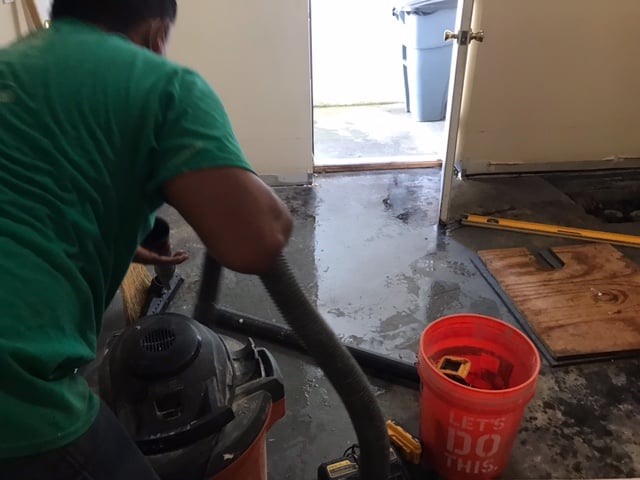
Storms can deliver the unexpected. It’s possible that your basement can take on water when it never had before. Heavy and persistent rain floods the soil around your home’s foundation. As the soil becomes saturated and can’t absorb more water, hydrostatic pressure builds up, pushing water through basement walls and floors and gushing through otherwise minor holes and cracks. The good news in most cases is that when the rain stops, the stormwater seeps right back outsWide on its own or with assistance from a sump pump.
When to Call a Pro About Basement Flooding
That said, if your home ever takes on a fair amount of groundwater, you should probably call a professional. The water receding may be the first of a few important next steps. For starters, if your furnace or hot water heater gets wet, you should contact a plumber and/or HVAC contractor. If your basement has been finished, you’ll have to pull up and dispose of any carpeting or wall paneling because it’s toast. Wet, soggy toast.
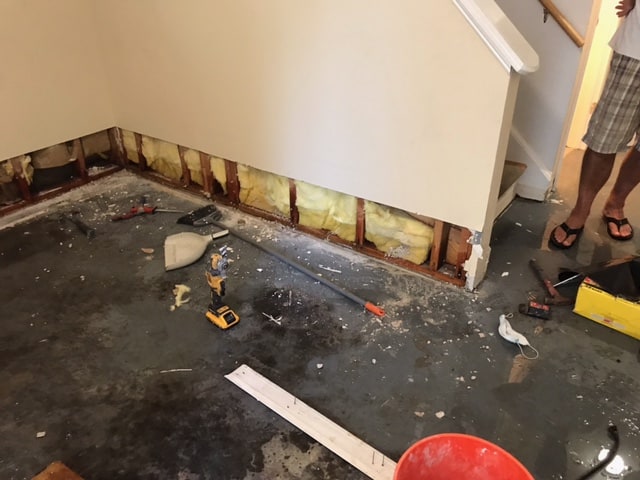
How the Pros Handle Wet Basement Cleanup
HomeSquare pros have great advice on the next steps to take. Their prescription is straightforward: everything from 6” inches above the highest watermark should be removed and eventually replaced. That includes sheetrock and insulation. With the exception of a ceramic-tiled floor or sealed concrete, everything must go. After the basement floor and walls are stripped, the next step is the wash-down. Every surface is cleaned and treated with a mold and mildew stymying solution that is bleach-based. Ventilation of the affected area is critical! If you’ve got any old fans hanging around upstairs, now’s the time to resurrect them.
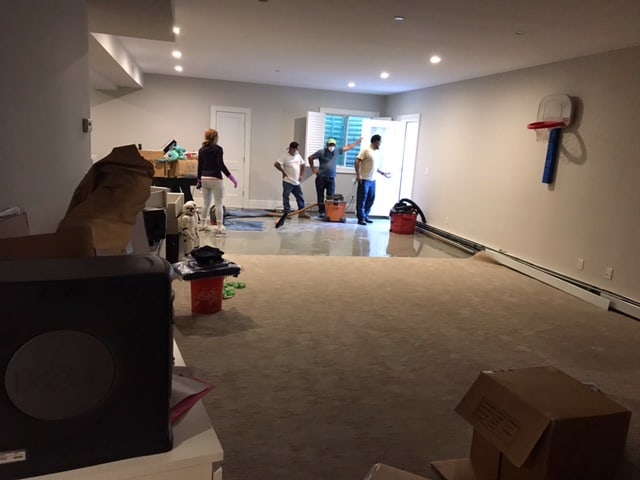
Is a Fully Waterproof Basement Possible?
Can your basement or garage truly be fully waterproofed? Bob Vila, renowned home care expert, advises if your home was built below grade, it’s inevitable one day it will take on water. Expect to see puddles here and there. Your basement may flood during heavy rain. The biggest concern about a humid or damp basement is that it’s a petri dish for mold and mildew. Your damp basement can even make you sick! Did you know prolonged exposure to high levels of indoor dampness can reduce lung function and even result in asthma? Less dire but no less annoying, a damp basement causes paint to peel, wood to rot, and whatever you’ve stored in the basement to grow a coat of mold.
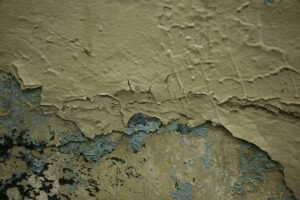
Now is not the time to beat up on yourself about the age and condition of your house. Over time, even the best-built house will settle, resulting in cracks in basement walls. Even the most structurally sound walls can absorb groundwater. A high-quality dehumidifier goes a long way to eliminating minor problems, but for a long-term solution, think about waterproofing.
While serious waterproofing is no job for amateurs, small cracks in your basement foundation can be addressed with hydraulic cement which creates a waterproof bond, pushing deep into wall cracks and crevices. And while window wells are great for allowing natural light to flow into your basement, they can be problematic if you don’t keep nearby drains unclogged and free of dirt, pine needles, leaves, and other natural debris that readily accumulates.
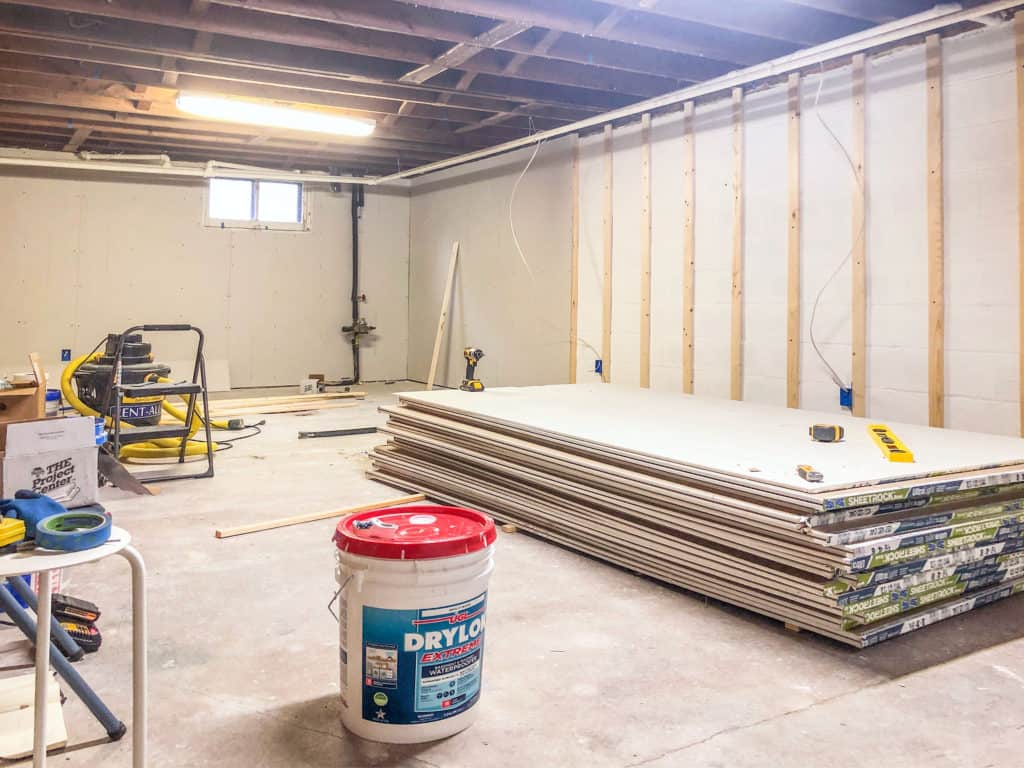
DIY Products vs. Professional Solutions
Lured in by advertisements for DIY products? Well, building professionals favor a product called DRYLOK to waterproof basements. This product is readily available at Home Depot, Ace Hardware, and Lowes, but be aware it is a professional product best left for use by the pros. And if you ever did paint your basement walls, all that paint has to be removed before any sealant can be applied. Paint is best removed with a sandblaster. Sometimes it’s necessary to use muriatic acid, also not a job for amateurs.
Don’t Forget to Document Basement Flood Damage
Remember, it’s important to document your damages for insurance purposes. It’s a good idea to check your policy and contact your agent. Take pictures and create a record of what was lost and what needs to be done and what it will cost to restore things to good order and mitigate future damage. This documentation might prove essential as you work with your insurance agent. And while you have your agent on the phone, you might want to discuss flood insurance. If you have a mortgage, some banks demand it.
Prevention is the Best Protection Against a Wet Basement
At the end of the day, an ounce of prevention is worth a pound of cure. Sometimes the solution to an ordinary damp basement is as simple as removing foundation plantings that require watering which allows water to seep in. Keep your gutters and downspouts in good repair and make sure they’re directing water away from the house. If your house is on a downward slope and drainage is a problem, an exterior drain tile system is an option. These systems aren’t cheap and it’s strictly a job for a foundation contractor, but if your home is in a low-lying area and you’re prone to flood water, it could be a home-saver.
Please contact a HomeSquare professional today if you have any questions and if you need help moving forward with professional repair and renovation services. And remember to check out some of our previous posts around basement flooding, repair, and renovations, to learn more.
Eve Marx
Eve Marx is a national journalist and book author. Follow her reflections on home design and interior style on Instagram at the hashtag #funkybeachhouseseasideror.






